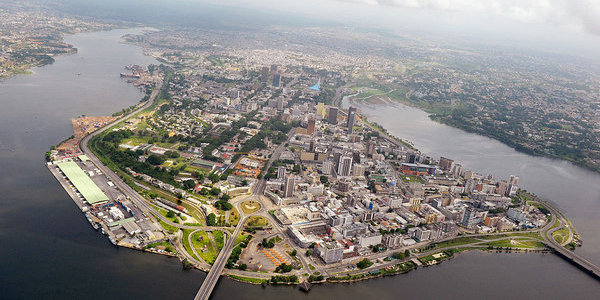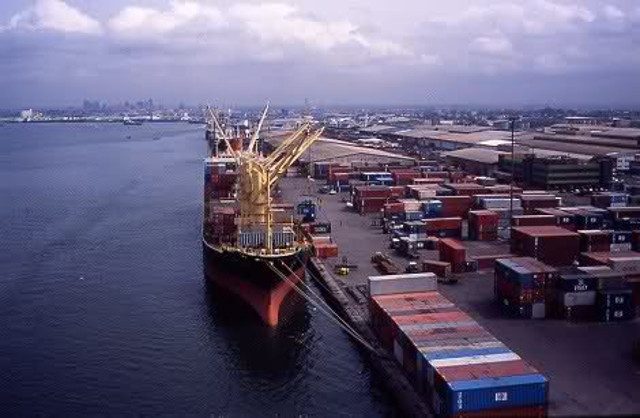
Cote d’Ivoire - Market Overview
Côte d’Ivoire is lone of the most dynamic economies in West Africa and key to unlocking the francophone Sub-Saharan Africa market. The economy averaged over 8 percent economic growth from 2012-2017, and strong growth is expected to continue through 2020. This positive outlook is underpinned by an improved political environment and stable inflation. The Government of Côte d’Ivoire (GOCI) supports private sector-led growth and has worked hard to improve its investment climate and build economic infrastructure to allow businesses to thrive. The country welcomes foreign investment and hopes to attract more than $37.5 billion in private sector investments through public-private partnerships to implement its 2016-2020 National Development Plan (NDP). The NDP aims to boost sustained and inclusive growth through proposed large infrastructure projects, driven by the private sector. Côte d’Ivoire is a lower middle income country with a growing consumer class supporting a vibrant retail and restaurant sector. Côte d'Ivoire has been a business and transportation hub for the entire West African region since the early 1960s. After the end of the 2011 political crisis, Côte d’Ivoire’s economy has rebounded sharply, resulting in 7.7 percent GDP growth in 2016 and 7.8 percent GDP growth in 2017. Robust growth is expected to continue with forecasts of 7.4 percent GDP growth in 2018 and 7.1 percent GDP growth in 2019.
The GOCI has implemented measures to strengthen transparency, improve governance and attract businesses. A new commercial court was created to help ensure impartiality and accelerate dispute resolution. The GOCI enacted mining and telecommunication codes to improve the operational environment for businesses in those sectors and plans to update the investment code in 2018. Côte d’Ivoire’s mining potential is significant, with untapped resources, including gold, copper, iron ore, manganese, bauxite and diamonds. In April 2014, the United Nations Security Council lifted the diamond export ban that had been in place since 2005. Recent oil discoveries have been made in the Gulf of Guinea and major projects are underway to boost the country’s hydroelectric and thermal power capacity.

Numerous business opportunities exist in agribusinesses, especially value-added processing of cocoa, cashews, rubber, cotton, palm oil and rice. Other opportunities exist in the sale of construction equipment and machinery; power generation; oil, gas and mining exploration; and infrastructure development. Côte d’Ivoire is a beneficiary country under the African Growth and Opportunity Act (AGOA).
https://www.get-invest.eu/market-information/cote-divoire/
Domestic and Foreign Market Access
Overview: Trade Policy and Business Environment
The Republic of Côte d'Ivoire is classified as a lower-middle-income economy country. The country was ranked 126th out of the 132 countries in the World Economic Forum (WEF) Global Enabling Trade Index (2012), which measures institutions, policies and services to facilitate trade in countries. Due to its relatively young population (with some 40 per cent of the population under 14), a coastline extending for 550 km, many water sources, and heavy rainfall, Côte d'Ivoire has great potential for sustainable economic growth. Until the late 1990s, it managed to integrate different sectors of activity into its economy very well. The social and political tension (2000-2011) held back growth and weakened the Ivorian economy's competitiveness. Today the country’s infrastructure is still one of the best and most extensive in the West African sub-region.
Trade Policy and Market Access
Côte d’Ivoire has been part of the WTO since its creation in 1995. Côte d’Ivoire has been showing willingness in complying with the multilateral trading system and considers it as a trigger to its regional integration and development. Côte d’Ivoire’s average MFN applied tariff in 2012 was 11.9 per cent. Agricultural imports into the country face higher tariff barriers (14.6 per cent) compared to non-agricultural imports (11.5 per cent). Côte d’Ivoire has been part of the Economic Community of West African States (ECOWAS) since its creation in April 1973, which objective was achieved with the common external tariff put in place in 2013 and the free movement of people, capital and goods within the bloc. Côte d’Ivoire has set up an initial framework for an Economic Partnership Agreement (EPA) with the EU. This agreement combines the benefits of a trade agreement with development assistance targeted at Côte d'Ivoire but its final goal remains to conclude a full EPA with all the members of the West African region.

Standard Compliance and Other Relevant Import/Export Restrictions
Upon its accession to the WTO, Côte d’Ivoire undertook to comply with the requirements of the Agreement on the Application of Sanitary and Phytosanitary Measures (SPS Agreement) and Agreement on Technical Barriers to Trade (TBT Agreement). With respect to SPS measures, the Ivorian regulatory framework for such measures appears to be outdated and fragmented. Côte d'Ivoire has not set up a risk management system for the purposes of SPS inspection at the customs cordon and its SPS certification system remains complicated, and not based on risk analysis. With respect to TBT measures, CODINORM coordinates the formulation and approval of Ivorian standards and provides certification services in Côte d'Ivoire. In principle, imports are treated in the same way as Ivorian products and must be accompanied by proof of their compliance with the technical regulations in force, issued by CODINORM. Nevertheless, there is neither control to ensure compliance with these regulations nor is the statutory time-frame for updating the standards and technical regulations being observed.
Natural resources in Ivory Coast Africa
Côte d'Ivoire's key natural resources include cocoa, oil and gas, rubber, diamonds, cobalt, copper, timber, water, and fish.

